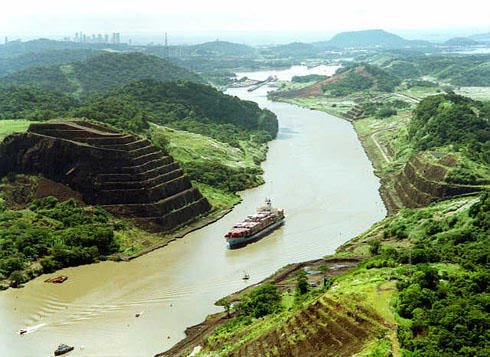Panama Canal

Tuesday, May 1, 2012
PP Notes Tokugawa Japan
Tokugawa Period
12
Japan
Origins of Tokugawa
Oda Nobunaga
Hideyoshi Toyotomi
Tokugawa Ieyasu
Tokugawa and it’s control system
Tokugawa Period (also called Tokugawa Shogunate): 1568 – 1868 AD
Tokugawa System:
Daimyo and their Han (Domain)
Shimpan
Fudai
Tozama
Tokugawa and it’s control system
Daimyo and their Han (Domain)
Shimpan
Fudai
Tozama
Tokugawa and it’s control system
Alternate residence
Hostage system
Conscription public works
Domain rearrangement.
Tokugawa’s Control Mechanisms
Caste system:
Samurai
Artisans
Farmers
Merchants
Burakumin
Tokugawa’s Control Mechanisms
Fixed Residences and Fixed occupations
International Restrictions:
Christianity in Japan?
Tokugawa Success: 200 years of general peace
Samurai culture and bushido dominant
Unintended outcomes of Tokugawa Control Mechanisms
Urban society
Art
Literature
Entertainment
Unintended outcomes of Tokugawa Control Mechanisms
National Transportation network
Unified Language
Unified Culture
Money Economy
Farmer’s wealth
Unintended outcomes of Tokugawa Control Mechanisms
Daimyo impoverished
Wealthy Merchants
Daimyo and Samurai Relationship changes
Samurai as Bureaucrats
Warriors without war
Decay and corruption at
the center
Tokugawa Meets the West
Commodore Perry: 1853
Tokugawa Meets the West
Shogun’s response
Kanagawa Treaty: 1854
Harris Treaty: 1858
Open ports
Extraterritoriality
Tariffs
Tokugawa Meets the West
Young Samurai Reaction
Choshu incident: 1863
Domestic Response
Foreign Response
Tokugawa Meets the West
Choshu’s new resolution
Satsuma and Choshu: Who, and why them?
Subscribe to:
Post Comments (Atom)
No comments:
Post a Comment